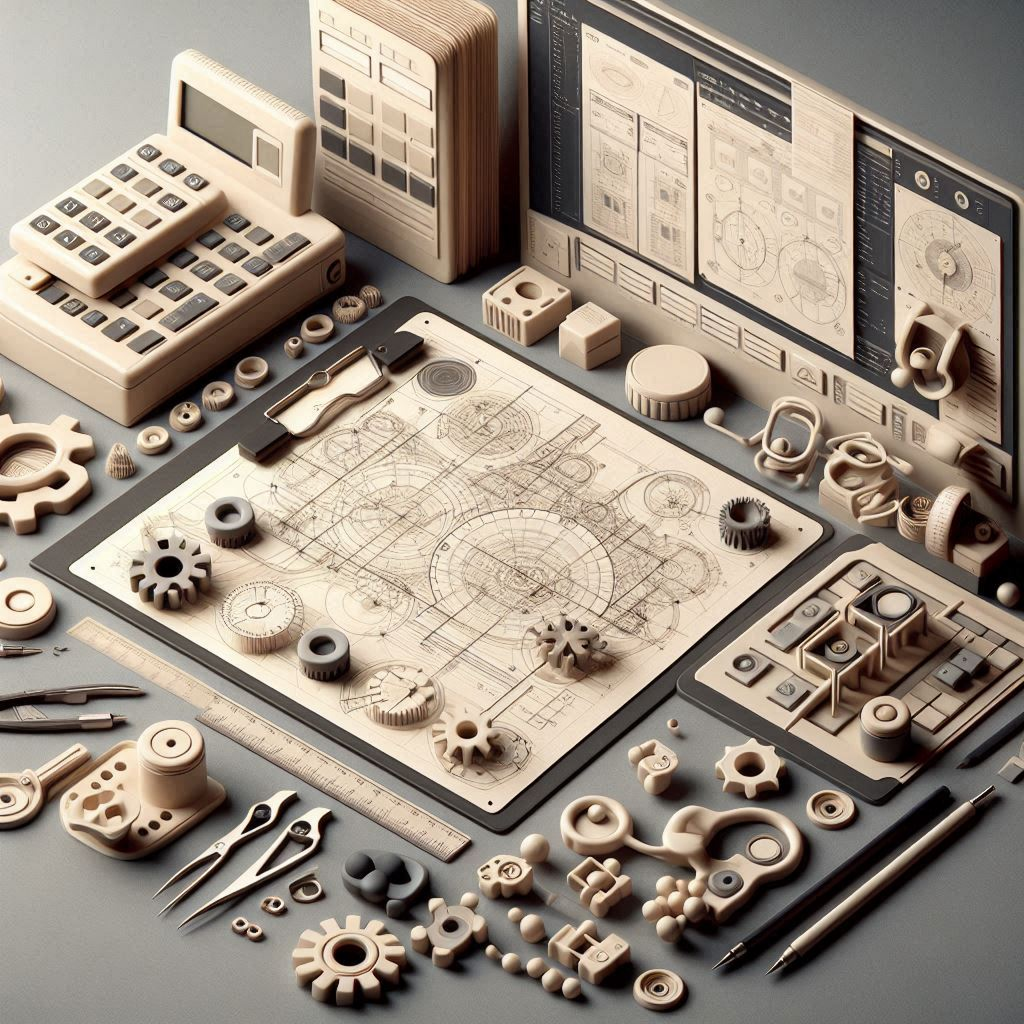Conceptual Design in System Modeling
Introduction
Conceptual design plays a crucial role in system modeling, serving as the foundation for analyzing and optimizing complex systems. Whether in engineering, operations research, or software development, system modeling provides a structured approach to representing and refining systems before implementation. This blog explores the conceptual design principles for system modeling, its methodologies, and the latest trends shaping its future.
1. The Importance of Conceptual Design in System Modeling
Conceptual design in system modeling is essential for:
– Understanding Complexity – Breaking down intricate systems into structured representations.
– Enhanced Communication – Providing a standardized framework for stakeholders.
– Optimized Performance – Identifying inefficiencies and improving system efficiency.
– Simulation-Based Analysis – Using computational tools to predict system behavior.
By incorporating conceptual design, engineers create models that simplify system structures and interactions, making them easier to analyze and optimize.
2. Types of System Models in Conceptual Design
Different types of system models support conceptual design processes:
– Physical Models: Represent tangible aspects, including mechanical or structural components.
– Mathematical Models: Utilize equations to describe system behavior and interactions.
– Simulation Models: Enable engineers to predict system performance over time.
– Graphical Models: Visual representations, including UML diagrams and process flowcharts.
– Formal Models: Use precise mathematical logic for rigorous system specification.
The selection of a modeling approach depends on the complexity of the system and the intended application of the design.
3. Methodologies for Conceptual System Modeling
Effective conceptual design in system modeling follows structured methodologies:
– Structured Analysis and Design: A systematic, top-down approach to model development.
– Object-Oriented Modeling: Representing system components as objects with data and behaviors.
– Model-Driven Architecture (MDA): Using models as the basis for automated system development.
– Agile Modeling: Iterative model development that evolves alongside project requirements.
Each methodology provides a different perspective on system representation, offering flexibility in model creation and refinement.
4. Principles of Conceptual Design in System Modeling
To create effective system models, several principles should be followed:
– Abstraction: Models should abstract away unnecessary details, focusing on essential features relevant to the analysis or design task.
– Consistency: Models must be consistent with each other and with the requirements they aim to fulfill.
– Modularity: Breaking down models into smaller, manageable modules enhances clarity and allows for easier updates and maintenance.
– Traceability: Maintaining traceability between models and requirements ensures that all aspects of the system are accounted for and can be validated.
– Scalability: Models should be designed to accommodate changes in system size and complexity without requiring a complete overhaul.
5. Tools and Technologies for System Modeling
Various tools and technologies facilitate system modeling:
– Modeling Software: Tools like MATLAB, Simulink, and Enterprise Architect provide environments for creating and analyzing models.
– Simulation Tools: Software such as AnyLogic and Arena allows for dynamic simulation of system behavior, enabling users to test different scenarios.
– Version Control Systems: Tools like Git help manage changes to models, ensuring that different versions can be tracked and collaborated on effectively.
– Integrated Development Environments (IDEs): IDEs like Visual Studio and Eclipse often include modeling capabilities, allowing for seamless integration between modeling and coding.
6. Challenges in Conceptual System Modeling
Despite its advantages, system modeling faces several challenges:
– Complexity Management: As systems grow in complexity, maintaining clear and understandable models becomes increasingly difficult.
– Stakeholder Alignment: Ensuring that all stakeholders have a shared understanding of the model can be challenging, particularly in large projects.
– Model Validation: Validating that a model accurately represents the real-world system it is intended to simulate can be a complex and resource-intensive process.
– Tool Limitations: The capabilities of modeling tools can vary significantly, and selecting the right tool for a specific task can be challenging.
7. Future Trends in Conceptual System Design and Modeling
The field of conceptual design is evolving, with advancements in:
– Automation & AI Integration: Reducing manual effort through automated model generation.
– Big Data & Analytics: Enhancing model accuracy using real-time data insights.
– Cloud-Based Modeling: Enabling remote collaboration on system design projects.
– Interdisciplinary Modeling: Combining engineering, computer science, and cognitive sciences for holistic system analysis.
These trends will continue to shape the future of system modeling, making designs more efficient, scalable, and adaptable.
Conclusion
The conceptual design of system modeling is crucial for engineering advancements, enabling efficient analysis and optimization. By integrating simulation methodologies, engineers can refine models, predict system behaviors, and improve performance before implementation. The continuous evolution of modeling techniques, combined with computational advancements, ensures that system designs remain scalable, adaptable, and optimized for real-world applications.
Do you like to read more educational content? Read our blogs at Cloudastra Technologies or contact us for business enquiry at Cloudastra Contact Us.
